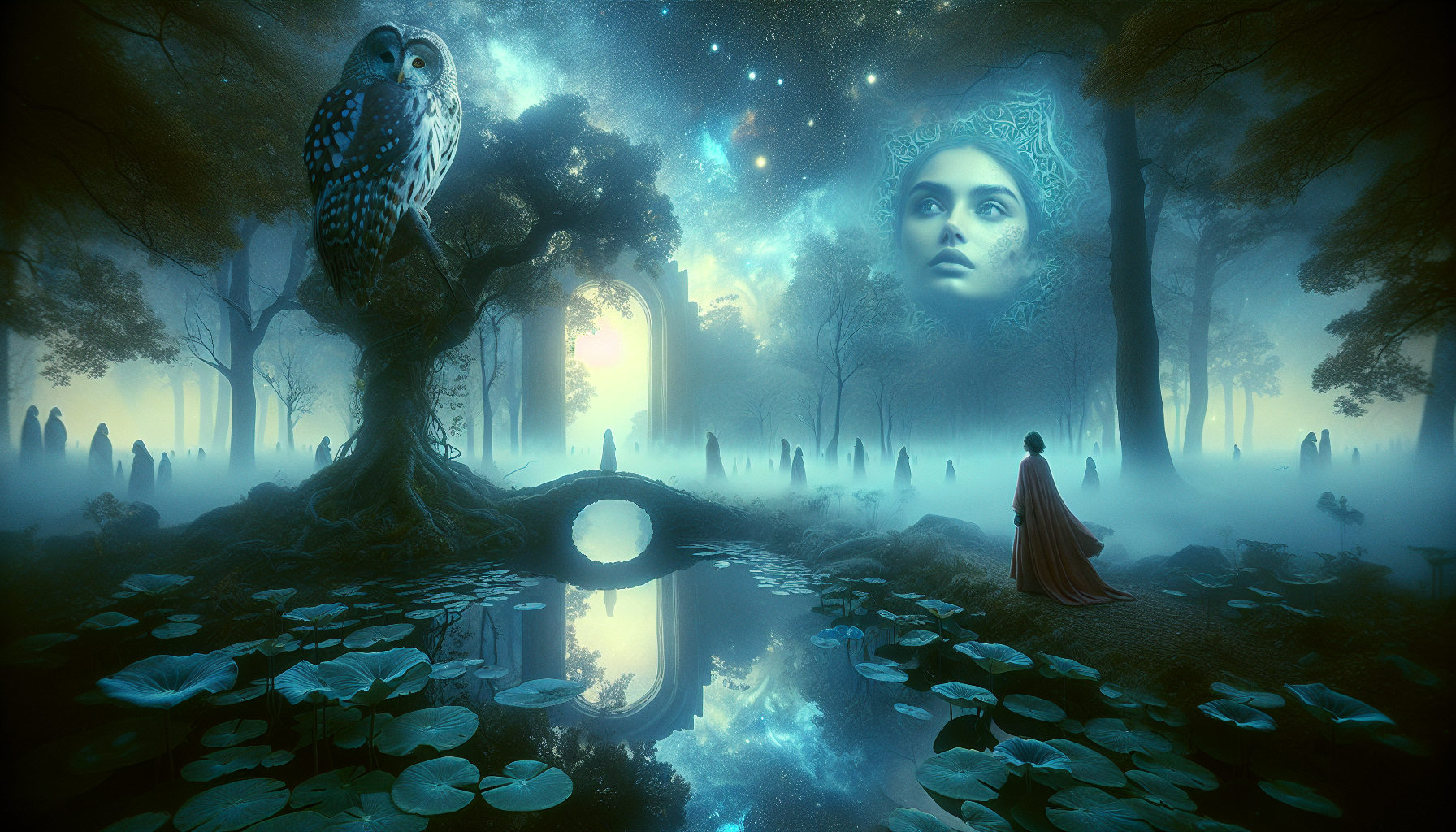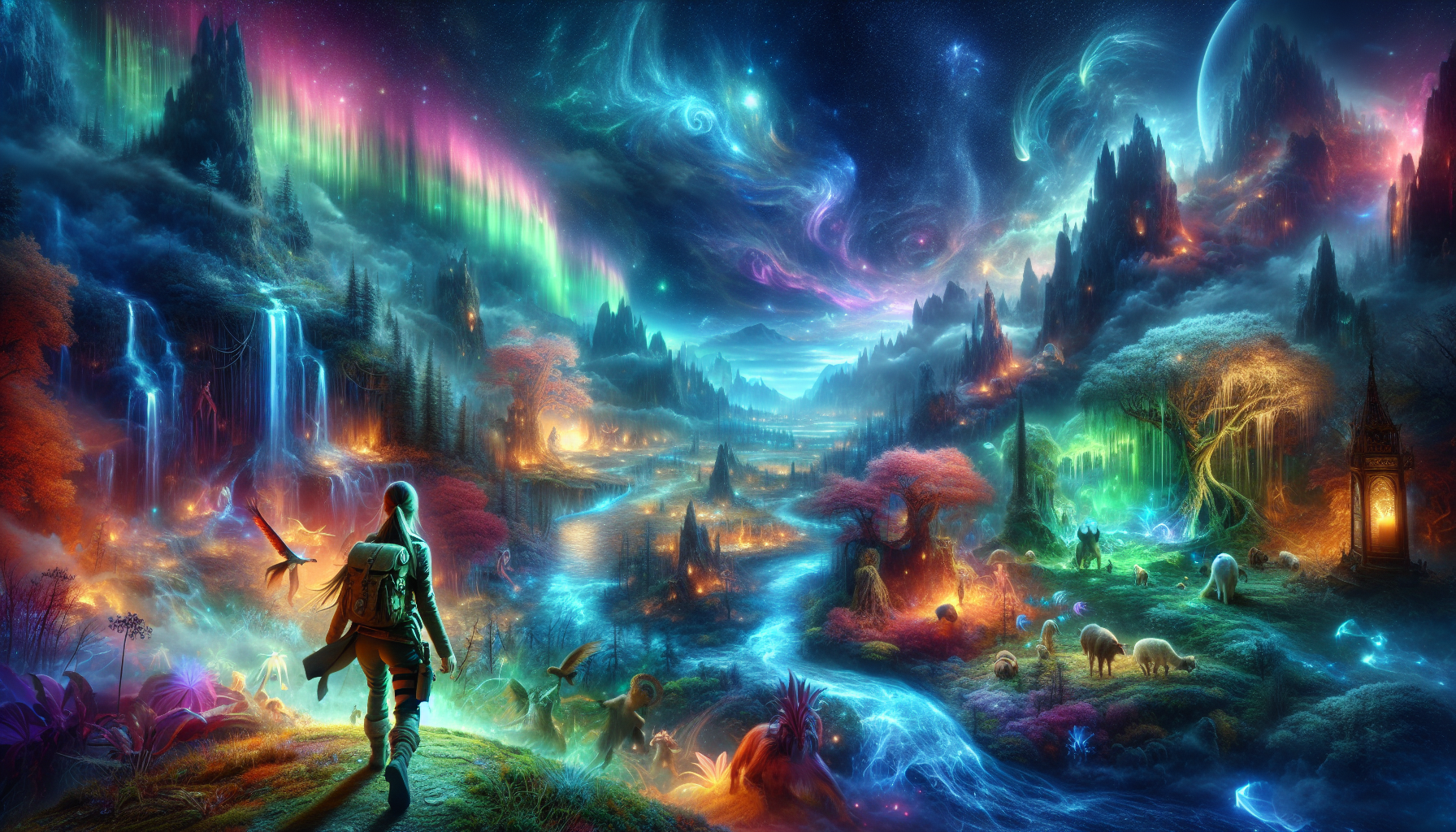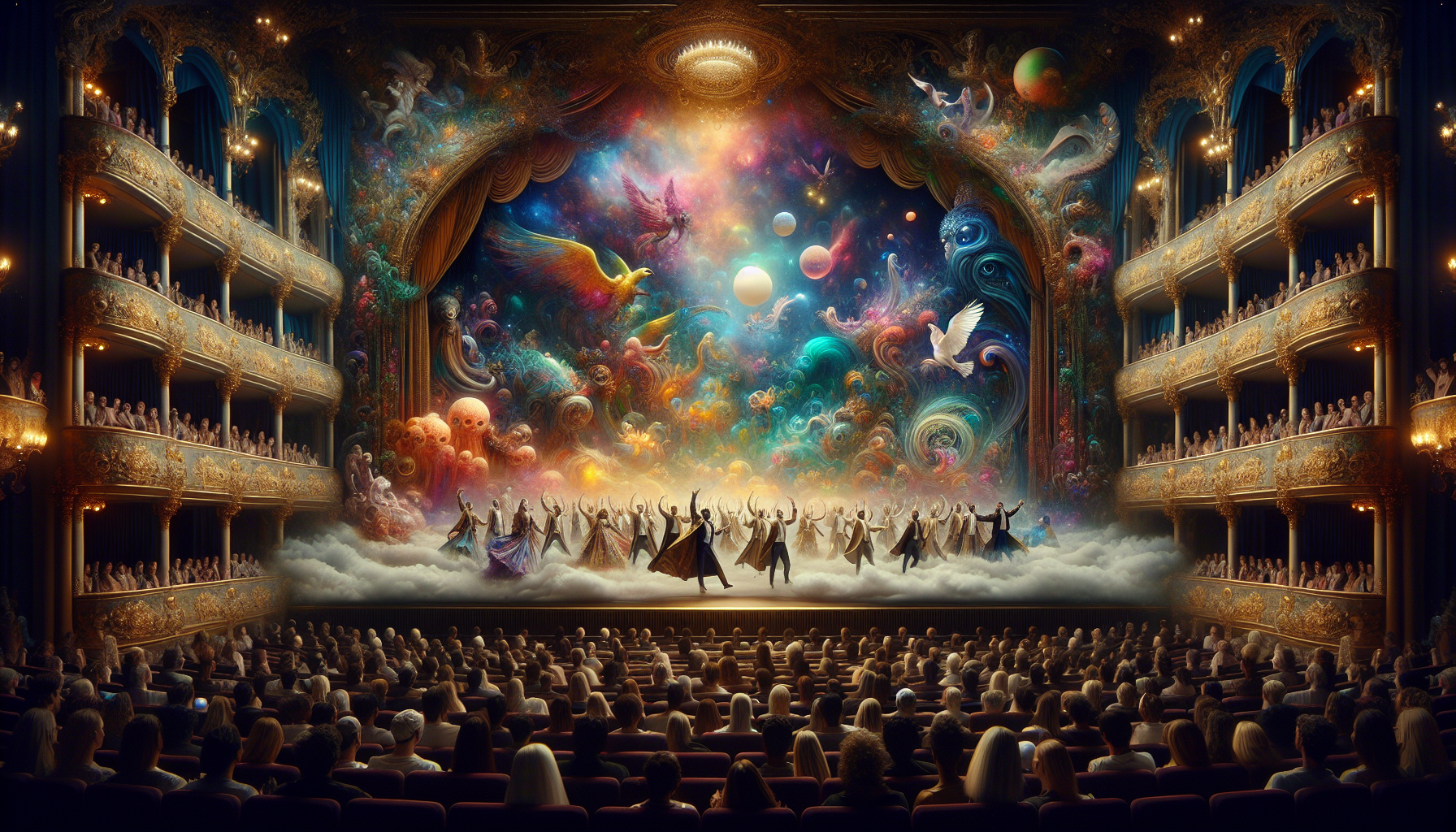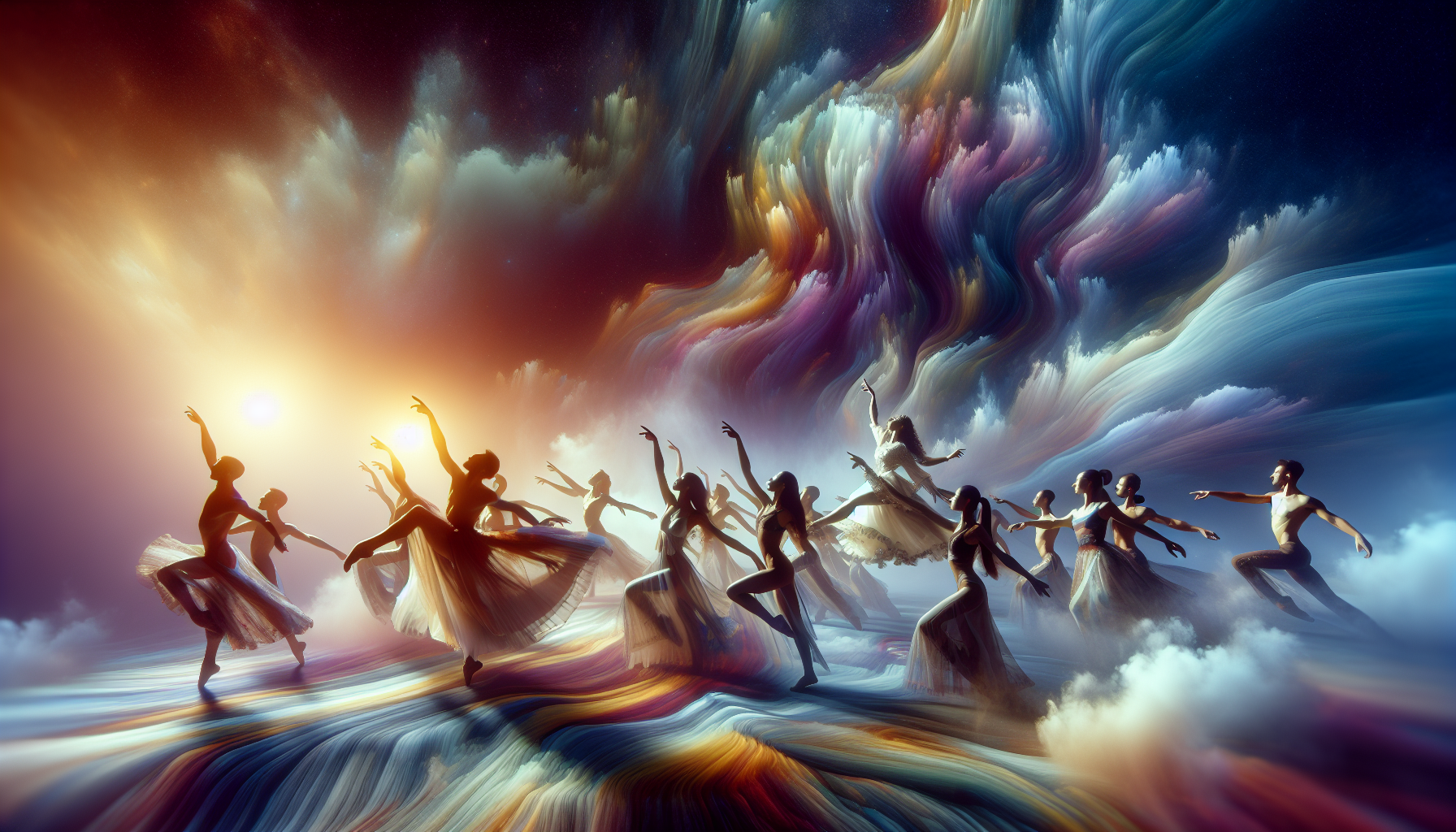In the silent theater of our minds, where the boundaries of reality blur and imagination takes center stage, dreams unfold as enigmatic stories woven with intricate symbols and narratives. Every night, as we drift into the depths of sleep, our subconscious scripts tales that are as mystifying as they are revealing. It is within this dreamscape that we encounter a cast of characters as old as humanity itself: the classic archetypes. From the wise old sage offering cryptic advice to the shadowy figures that evoke fear and curiosity, these archetypes are more than mere figments of imagination. They are echoes of the collective unconscious, universal symbols that resonate deeply within the human psyche. 🌌
Our journey into the world of dreams invites us to delve into the profound mysteries of these archetypes, exploring their origins, meanings, and the roles they play in our nocturnal narratives. What does it mean to dream of the hero embarking on a perilous quest, or to encounter the trickster who upends the dream’s order with a mischievous grin? These recurring motifs are not random; they are deeply embedded in our cultural and psychological fabric, serving as guides, warnings, and reflections of our innermost desires and fears. By unraveling the significance of these dream archetypes, we gain insight not only into our personal subconscious but also into the shared human experience that transcends time and culture.
In this exploration, we will traverse the landscapes of Carl Jung’s theories, examining how his insights into the collective unconscious and archetypes illuminate the nature of our dreams. We’ll journey through the rich tapestry of mythological and literary references, connecting the dots between ancient tales and modern dreams. Along the way, we will consider how these timeless symbols manifest in our dreams, offering both challenges and revelations. Whether you are a seasoned dream interpreter or a curious newcomer, this deep dive into the archetypal realm of dreams promises to be both enlightening and transformative, inviting you to uncover the hidden layers of your own psyche and the universal truths that bind us all. 🌠
Understanding the Role of Archetypes in Dreams
Dreams have fascinated humanity for centuries, providing insights into the deepest layers of the human psyche. Among the various elements that populate our dreamscapes, archetypes play a significant role. These universal, symbolic figures, as introduced by Carl Jung, emerge repeatedly in dreams across different cultures and epochs, embodying shared human experiences and emotions. Exploring these archetypes allows us to delve into the unconscious mind, revealing hidden fears, desires, and unresolved conflicts.
Archetypes in dreams can be seen as psychological blueprints, reflecting intrinsic patterns of thoughts and behaviors. They often appear in the form of characters or motifs such as the Hero, the Shadow, the Anima/Animus, and the Wise Old Man. Each archetype carries specific meanings and messages, and their presence in dreams can offer profound insights into our personal and collective unconscious. By examining these symbolic figures, we can begin to understand the complexities of our own inner worlds and gain valuable guidance for personal growth and self-discovery.
Jung believed that recognizing and integrating these archetypes could lead to a more harmonious and balanced life. For example, confronting the Shadow archetype, which represents the hidden and often repressed aspects of ourselves, can lead to a deeper understanding of our darker traits and ultimately, to personal transformation. Similarly, engaging with the Anima or Animus, which represents our inner feminine or masculine, respectively, can foster a more complete and authentic self-awareness. As we explore the realm of dreams, it is essential to approach these symbols with an open mind and a willingness to engage with the unconscious, as this journey can be both enlightening and transformative. 🌟
The Hero Archetype: A Journey of Transformation
The Hero archetype is one of the most recognizable and prevalent figures in dreams, often symbolizing the quest for identity and self-fulfillment. This archetype typically embarks on a journey or quest, facing trials and overcoming obstacles along the way. The Hero’s journey mirrors our own struggles and triumphs in life, representing the search for meaning and the pursuit of personal goals.
In dreams, the Hero might appear as a courageous warrior, a valiant knight, or even a determined adventurer. These figures often embody qualities such as bravery, determination, and resilience, encouraging the dreamer to confront challenges and embrace change. The Hero’s journey in dreams can be seen as a metaphor for our own life experiences, urging us to confront fears, overcome limitations, and strive for personal growth.
Interestingly, the Hero archetype is not limited to one gender or cultural context. It can manifest in various forms, depending on the dreamer’s background and personal experiences. By engaging with this archetype, we can gain a deeper understanding of our inner motivations and aspirations. The Hero’s journey, with its trials and triumphs, serves as a powerful reminder that we possess the strength and courage to overcome obstacles and achieve our dreams. 🛡️
Table: Characteristics of the Hero Archetype
| Characteristic | Description |
|---|---|
| Courage | The Hero faces challenges with bravery and determination, embodying the strength to confront fears and uncertainties. |
| Resilience | Despite setbacks and obstacles, the Hero perseveres, demonstrating the ability to adapt and overcome adversity. |
| Transformation | The Hero’s journey often leads to personal growth and self-discovery, symbolizing the potential for transformation and change. |
The Shadow Archetype: Embracing the Unseen
The Shadow archetype represents the hidden and often repressed aspects of our personality. These are the parts of ourselves that we might not want to acknowledge or accept, yet they play a crucial role in shaping our behaviors and attitudes. In dreams, the Shadow often appears as a mysterious, dark figure or an unfamiliar entity, embodying the aspects of ourselves that we have disowned or suppressed.
Engaging with the Shadow archetype can be both challenging and rewarding. It requires us to confront the parts of ourselves that we might find uncomfortable or unsettling. However, by acknowledging and integrating the Shadow, we can achieve a more balanced and authentic self-awareness. This process involves recognizing our fears, insecurities, and undesirable traits, and understanding how they influence our actions and interactions with others.
In the realm of dreams, the Shadow can manifest in various forms, such as a threatening figure, a dark landscape, or a sense of impending danger. These symbols invite us to explore the darker aspects of our psyche and to embrace the full spectrum of our emotions and experiences. By doing so, we can achieve a more integrated and harmonious self, free from the limitations imposed by repression and denial. 🌑
The Anima and Animus: Bridging the Inner Divide
The Anima and Animus archetypes represent the inner feminine and masculine aspects of our psyche, respectively. According to Jung, these archetypes are crucial for achieving a balanced and integrated self. The Anima is the feminine soul-image in men, while the Animus is the masculine soul-image in women. In dreams, these archetypes often appear as figures of the opposite gender, inviting us to explore and integrate these inner dimensions.
The Anima and Animus can manifest in various forms, from nurturing and compassionate figures to assertive and authoritative personas. These archetypes encourage us to embrace and harmonize our feminine and masculine qualities, leading to a more complete and authentic self-awareness. Engaging with the Anima and Animus allows us to transcend traditional gender roles and embrace the full range of human experience.
In dreams, these archetypes might appear as romantic partners, guiding figures, or even adversaries, challenging us to confront our biases and assumptions about gender and identity. By integrating the Anima and Animus, we can achieve a more harmonious balance between our inner and outer worlds, fostering greater self-acceptance and understanding. 🌈
The Wise Old Man: Seeking Guidance and Wisdom
The Wise Old Man archetype represents the embodiment of wisdom, knowledge, and guidance. This figure often appears in dreams as an elder, a sage, or a mentor, offering insights and advice to the dreamer. The presence of the Wise Old Man in dreams can signify the search for deeper understanding and the desire for inner guidance.
In many cultures, the Wise Old Man is revered as a symbol of enlightenment and spiritual insight. This archetype encourages us to seek wisdom from within and to trust our inner intuition. In dreams, the Wise Old Man might appear during times of uncertainty or transition, providing reassurance and support as we navigate the complexities of life.
Engaging with the Wise Old Man archetype can lead to profound personal growth and transformation. By embracing the wisdom and guidance offered by this figure, we can cultivate greater self-awareness and insight. The Wise Old Man reminds us that the answers we seek often lie within ourselves, and that by listening to our inner voice, we can find clarity and direction on our life’s journey. 🌟
To explore more about the significance of archetypes in dreams, watch this insightful video: Exploring Archetypes in Dreams – Jungian Analysis.

Conclusion
In conclusion, our exploration of classic archetypes appearing in dreams has provided a fascinating journey into the depths of the human unconscious. By delving into these universal symbols, we’ve gained insight into the common threads that weave through our collective psyche, as initially proposed by Carl Jung. Throughout this article, we examined several key archetypes, including the Shadow, the Anima and Animus, the Hero, and the Wise Old Man, among others. Each of these figures serves as a mirror, reflecting parts of ourselves that are often hidden from our conscious awareness.
The Shadow represents the darker aspects of our personality—traits and desires we may not readily acknowledge. Understanding this archetype allows us to confront and integrate these aspects, leading to personal growth and self-acceptance. The Anima and Animus, as embodiments of our inner femininity and masculinity, encourage a balance of these energies, promoting harmony and wholeness within our psyches. Meanwhile, the Hero archetype inspires us to embark on our personal quests for meaning and purpose, reminding us of our capacity for resilience and courage in the face of adversity.
The presence of the Wise Old Man in our dreams often signifies a quest for wisdom and guidance, urging us to seek knowledge and understanding from within and from those who have walked the path before us. Each of these archetypes plays a crucial role in the narratives of our dreams, acting as guides, challengers, and companions on our journey through life.
The significance of understanding these archetypes cannot be overstated. By recognizing these symbols and what they represent, we can gain profound insights into our own behaviors, motivations, and desires. This awareness not only enhances our self-understanding but also enriches our relationships with others, fostering empathy and connection. Dreams offer a unique window into the unconscious mind, and by interpreting these archetypal symbols, we unlock the potential for profound personal transformation.
As we conclude this exploration, it’s essential to emphasize the importance of engaging with our dreams actively. By keeping a dream journal, discussing our dreams with trusted friends or therapists, or even engaging in dream analysis, we can cultivate a deeper relationship with our unconscious mind. This practice can illuminate the paths we walk and reveal the hidden motivations driving our actions. Moreover, as we share our insights and experiences, we contribute to a collective understanding of the human experience, enriching the lives of those around us.
We encourage you, dear reader, to continue this journey of self-discovery. Reflect on the dreams that linger in your memory and consider what archetypes might be at play. How do these symbols resonate with your waking life? What messages might your unconscious be trying to convey? By contemplating these questions, you can begin to harness the power of your dreams as tools for self-awareness and personal growth.
Furthermore, we invite you to share your thoughts and experiences with others. Engage in discussions about dreams and archetypes, whether in person or through online communities. By doing so, you contribute to a broader dialogue that enhances collective understanding and appreciation of the rich tapestry of the human mind.
In an ever-evolving world, where understanding ourselves and others is more critical than ever, exploring the archetypes in our dreams offers a timeless avenue for personal and communal growth. May this article inspire you to delve deeper into your own dreamscapes and uncover the wisdom that lies within.
🌟 If you’ve found this exploration enlightening, please consider sharing it with friends or on social media. Your engagement helps spread awareness of the fascinating world of dreams and archetypes, encouraging others to embark on their own journeys of self-discovery. Thank you for joining us on this adventure through the unconscious mind. 🌌
For further reading on Jungian archetypes and dream analysis, consider visiting the following resources:
– International Association for the Study of Dreams
These links provide a wealth of information and a community of like-minded individuals interested in the rich and complex world of dreams.
Gabriel is a visual storyteller and dream archivist whose work explores the fragile boundary between memory and imagination. Through layered visuals and symbolic design, Gabriel captures the fleeting essence of dreams — those strange, beautiful, and sometimes haunting fragments that drift through sleep and linger in waking thought.
His creative journey is rooted in a deep fascination with the subconscious and the imagery it conjures. From half-remembered landscapes to recurring symbols and surreal encounters, each piece Gabriel brings to life becomes a portal into the inner archive — where time distorts, meanings shift, and personal mythology takes form.
With a background in handcrafted artistry and visual composition, Gabriel merges intuition with intention. His work doesn’t merely depict dreams; it preserves them, translating ephemeral moments into tangible expressions that evoke emotion, curiosity, and quiet revelation. Each visual is both a record and an invitation to explore the rich terrain of inner life.
Through illustrated dream journals, symbolic studies, and visual essays, Gabriel invites others to connect with the poetic architecture of their subconscious landscapes. His art becomes a mirror — not only of what we see at night, but of what we carry deep within.
His work is a tribute to:
-
The fragile beauty of forgotten dreams
-
The language of symbols in the subconscious mind
-
The inner worlds we visit but rarely name
Whether you’re a lucid dreamer, a seeker of hidden meanings, or someone fascinated by the mystery of sleep-born stories, Gabriel welcomes you to step into a space where dreams are not lost — they are archived, one vision, one sketch, one silent narrative at a time.





